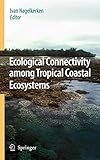Ecological connectivity among tropical coastal ecosystems / Ivan Nagelkerken, Editor
Nagelkerken, Ivan [editor].
Tipo de material: Libro
impreso(a)
y electrónico
Editor: Dordrecht, The Netherlands: Springer Science+Business Media B.V, 2009Descripción: xiii, 615 páginas : ilustraciones, fotografías, retratos, mapas ; 24 centímetros.Tipo de contenido: Texto Tipo de medio: Computadora Tipo de portador: Recurso en líneaISBN: 9048124050; 9789048124053.Tema(s): Ecología costera
Libro
impreso(a)
y electrónico
Editor: Dordrecht, The Netherlands: Springer Science+Business Media B.V, 2009Descripción: xiii, 615 páginas : ilustraciones, fotografías, retratos, mapas ; 24 centímetros.Tipo de contenido: Texto Tipo de medio: Computadora Tipo de portador: Recurso en líneaISBN: 9048124050; 9789048124053.Tema(s): Ecología costera| Tipo de ítem | Biblioteca actual | Colección | Signatura | Estado | Fecha de vencimiento | Código de barras |
|---|---|---|---|---|---|---|
| Libros |
Biblioteca Chetumal
Texto en configuración de biblioteca Chetumal |
Acervo General | 577.51 E2 | Disponible | ECO030008845 | |
| Libros | Biblioteca Electrónica Recursos en línea (RE) | Acervo General | Recurso digital | ECO400599164108 |
Incluye bibliografía e índice
1 Introduction.. Part I Biogeochemical Linkages.. 2 Nitrogen and Phosphorus Exchange Among Tropical Coastal Ecosystems.. 3 Carbon Exchange Among Tropical Coastal Ecosystems.. Part II Ecological Linkages.. 4 Dynamics of Reef Fish and Decapod Crustacean Spawning Aggregations: Underlying Mechanisms, Habitat Linkages, and Trophic Interactions.. 5 The Senses and Environmental Cues Used by Marine Larvae of Fish and Decapod Crustaceans to Find Tropical Coastal Ecosystems.. 6 Mechanisms Affecting Recruitment Patterns of Fish and Decapods in Tropical Coastal Ecosystems.. 7 Habitat Shifts by Decapods-an Example of Connectivity Across Tropical Coastal Ecosystems.. 8 Diel and Tidal Movements by Fish and Decapods Linking Tropical Coastal Ecosystems.. 9 Living in Two Worlds: Diadromous Fishes, and Factors Affecting Population Connectivity Between Tropical Rivers and Coasts.. 10 Evaluation of Nursery function of Mangroves and Seagrass beds for Tropical Decapods and Reef fishes: Patterns and Underlying Mechanisms.. 11 Sources of Variation that Affect Perceived Nursery Function of Mangroves.. Part III Tools for Studying Ecological and Biogeochemical Linkages.. 12 Tools for Studying Biogeochemical Connectivity Among Tropical Coastal Ecosystems.. 13 Tools for Studying Biological Marine Ecosystem Interactions-Natural and Artificial Tags.. 14 A Landscape Ecology Approach for the Study of Ecological Connectivity Across Tropical Marine Seascapes.. Part IV Management and Socio-economic Implications.. 15 Relationships Between Tropical Coastal Habitats and (offshore Fisheries.. 16 Conservation and Management of Tropical Coastal Ecosystems.. Index
Disponible para usuarios de ECOSUR con su clave de acceso
Mangrove forests, seagrass beds, and coral reefs are circumtropical ecosystems that are highly productive, and provide many important biological functions and economic services. These ecosystems cover large surface areas in the shallow tropical coastal seascape but have suffered from serious human degradation, especially in the last few decades. Part of their diversity, productivity, and functioning seems to be based on their juxtaposition. Especially in the last decade significant advances have been made on new insights into their ecological connectivity. This authoritative book provides a first-time comprehensive review of the major ecological interactions across tropical marine ecosystems that result from the mutual exchange of nutrients, organic matter, fish, and crustaceans. A group of leading authors from around the world reviews the patterns and underlying mechanisms of important biogeochemical and biological linkages among tropical coastal ecosystems in 15 chapters. Included are chapters that review cutting-edge tools to study and quantify these linkages, the importance of such linkages for fisheries, and how tropical ecosystems should be conserved and managed for sustainable use by future generations. The book uses examples from all over the world and provides an up-to-date review of the latest published literature. This book is a 'must read' for professionals working on the conservation, management, and ecology of mangrove, seagrass and coral reef ecosystems. eng
